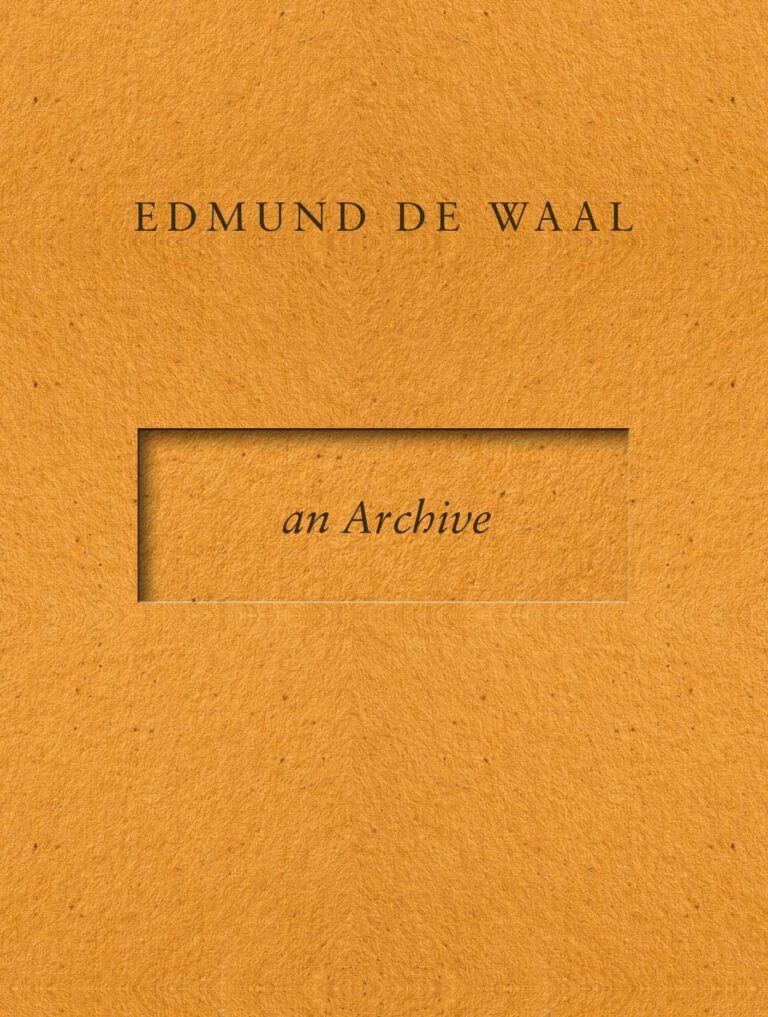mono.kultur 40 «Edmund de Waal»

Edmund de Waal is a potter. His pots, plates, and vessels are made for use and for living on and off the kitchen shelf. De Waal learnt his craft in early apprenticeships in Japan and England and worked with stoneware until 1988, when he began experimenting with the material that would hold his attention until today: porcelain. He deepened his engagement with porcelain at the Mejiro Ceramics studio in Japan, where he also started arranging his objects in groups and sequences, treating them as bodies of ideas rather than based on their function. Returning to London in 1993, he developed a distinctive pale celadon glaze and began his ongoing search for material memory, a vessel that represents the materials history.
Edmund de Waal is an artist. His intricate porcelain bowls dont deny their function and history, but they also exist as objects with their own associations and intentions. In an unusual interdisciplinary shift from one context to another, his arrangements have found their place at the Victoria and Albert Museum as well as the Tate Britain in London, at renowned galleries worldwide, at the Kunsthistorisches Museum in Vienna, and elsewhere. Within the environment of art institutions, his objects turn into complex large-scale installations and choreographies where pots are arranged in multiple series of singulars. They are as mysterious as they are mesmerising, with the gaze of the viewer often obscured and the objects placed behind tinted surfaces and in vitrines. Some are hiding in purposeful shadows; others are exposed to spotlights. Their groupings and titles often refer to literary or musical affinities.
Edmund de Waal is a writer. What he works with are concepts, ideas, and desires. In 2010, his family memoir of a kind, The Hare With Amber Eyes, became a surprise bestseller, winner of several awards, and was translated to 25 languages. It is the biography of a collection intertwined with the biography of his family, an intimate account of memories and how these are objectified in collections, in this case a very special collection of netsuke, small Japanese figures cut from wood or ivory. The most obvious characters in the book, however, are the sentences that are treated like objects, sculpted descriptions of spaces, interiors, landscapes, and the people moving within them. His latest book, The White Road, is as much a travelogue as it is a highly personal research into the history of porcelain. It again deals with settings for objects and their inner and outer connections, collections of shards that are tracing his pilgrimage to the past and present histories of the three most important sites in the history of porcelain: Jingzedhen in China, Dresden in Germany, and Cornwall in England.
It is impossible to separate the two strands, making and writing, in Edmund de Waals work. From his beginnings, when after his first pottery apprenticeships he took a literature degree at Cambridge University, the worlds of words and objects overlapped and integrated each other. His work is a constant attempt to define yet not rest on definition. There is a strong consideration of space, sound, and weight in his ways of working and thinking, from his minimalist approach to colour to the almost architectural concerns of spatial abstraction, a visual language and a musical appreciation of silence. And yet this silence is filled by his passion for literature and sound, watermarked with references and associations. His vessels, one could say, are filled with words.
Perhaps for Edmund de Waal to throw is to dreamthink, to borrow a neologism from the author Mark von Schlegell. And then writing comes as ascertainment, the words more obviously bound to ideas and narratives, a weight balancing the hallucinating quality of the vessels. Its a continuous back and forth, and when he pens the last paragraph of The White Road, one can sense his happiness to return to his studio, to the wheel, throwing pots, making again. The notes for the next endeavour with words are nevertheless already beginning to appear: Walter Benjamin has lured him onto lines of thought and desire and there are quotes scribbled all over the walls next to his wheel, stacks of books sitting patiently on desks and stools, waiting for the next intermission in the making.
With this in mind when visiting Edmund de Waal in his studio in South London, questions around keywords, concepts, and affinities almost naturally suggested an alphabet as an alternative approach to the world and work of de Waal, an indexed stream of consciousness that could embrace both his words and his vessels.
Hay existencias






